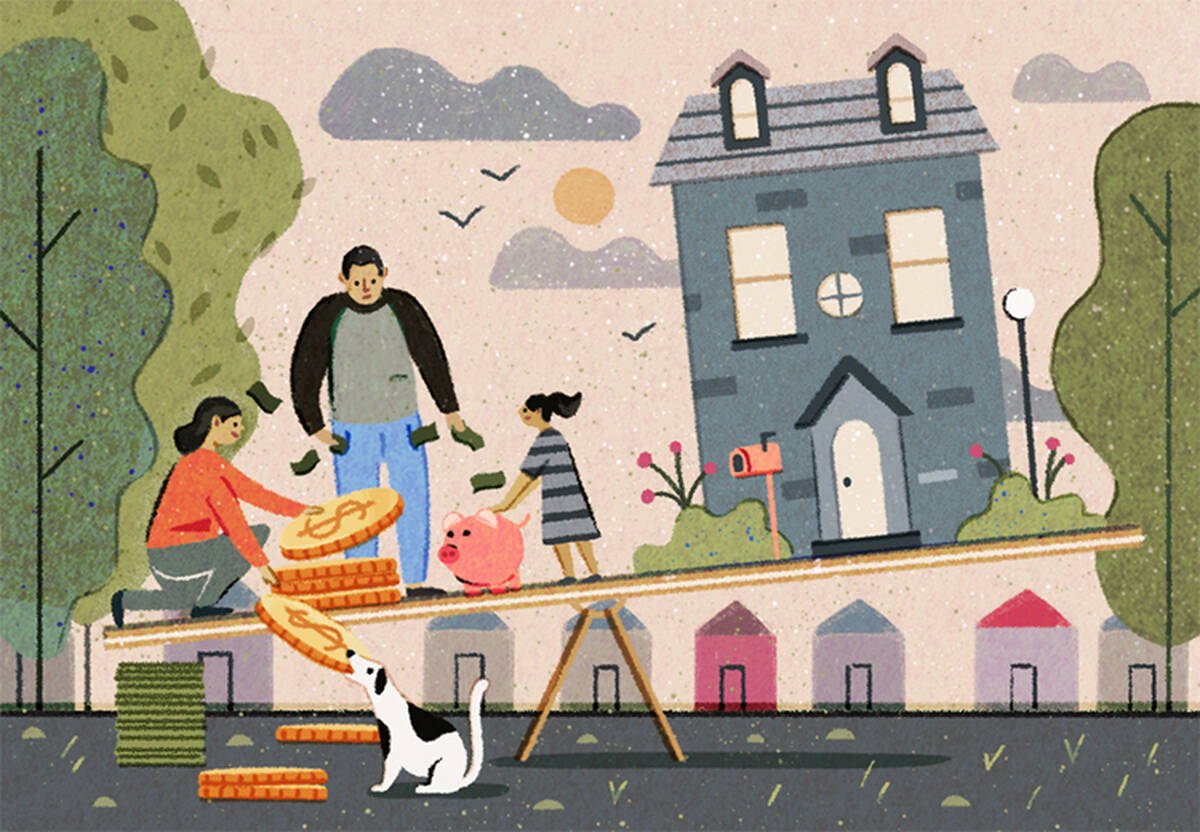Here are five insights from Kellogg faculty members that will help you better understand not only your own financial behavior, but also some of the factors likely to help or hinder the economy at large.
1. A Way to Prevent the Next Recession?
What if there was a way to ward off another Great Recession that not only worked, but that was … easy?
Kellogg School finance professor Janice Eberly and a colleague have come up with what they say is a simple, effective method of intervening in a housing crisis: quickly get more cash into homeowners’ hands by automatically lowering their mortgage payments.
Imagine that another major housing downturn threatens. If mortgage payments were designed to automatically adjust downwards in that scenario—perhaps through lower interest rates or payment deferrals—homeowners would have more cash to spend, thus boosting the local and national economy. Homeowners would also be less likely to default on those mortgages.
“People should think of automatic-reset mortgages as similar to insurance,” Eberly says. “They may cost more, but they have benefits to lenders and borrowers, and might help you stay in your house.”
2. Income Ups and Downs
Let’s say you get a little extra income. Are you more likely to blow it right away or to hang onto it for a while?
Lorenz Kueng, an assistant professor of finance, studied this question thanks to something called the Alaska Permanent Fund (APF), which is generated by oil-related investments. Each October, most Alaskans get a $1,000–$2,000 dividend from the fund.
Of the Alaskans whose spending Kueng examined, the richest spent 61 percent of their dividend within three months of receiving it. In that same period, the poorest spent only 12 percent.
So if you are a high-income household, don’t be surprised to find yourself spending a bonus instead of saving it.
What about the opposite? What happens when consumers’ income takes a hit instead?
One long-standing economic theory suggests that even when our income fluctuates, we tend to maintain our spending habits. But Scott Baker, an assistant professor of finance, and his coauthor found otherwise.
They examined the spending habits of federal employees whose paychecks were put on hold during the two-week partial government shutdown of October 2013. Even though the employees knew during the shutdown that they were likely to receive their back pay eventually, they reduced their spending by about 10 percent.
“It’s only when that money actually hits their checking accounts that spending goes back to normal,” Baker says.
3. Think Liquid
Not all assets are created equal—at least not when it comes to their ability to help with unexpected money troubles.
That is the message of other research from Scott Baker, an assistant professor of finance, who examined transaction records from 150,000 households to determine how these households reacted to financial blows.
Baker was able to see not just a household’s cash flow, but its liquid assets, investments, and debts as well. Thanks to direct-deposit records, he could also connect families to their employers and thereby link layoffs, low-earnings reports, and similar events to drops in the families’ incomes.
Baker found that households with liquid assets, such as a few months’ worth of cash in the bank, were best equipped to deal with negative financial turns. That is in contrast to households with larger, illiquid assets, such as home equity.
In the face of a negative income fluctuation, families with highly leveraged assets tended to decrease their spending by 25 percent, as compared to families with more liquid assets.
“If you look at two households with the same level of dollar assets, but one has those assets tied up in their house, and the other has them in a bank account, they’ll respond to a drop in income very differently,” Baker explains. “The household that has their savings in illiquid form will have to change their consumption to a greater degree, because it’s harder to access the money they need to cushion the blow to their income.”
That means that no matter how wealthy you are on paper, it is wise to keep a healthy cash reserve on hand.
4. Why We Are So Quick to Borrow
When the value of their home rises, homeowners inevitably take out more debt. Why?
Economists offer two explanations. The first—the “wealth effect”—suggests that increased home values make homeowners feel richer, so they are comfortable carrying more debt.
The second explanation is called the “collateral channel.” It postulates that owners of homes whose values have increased tend to borrow more because, well, they can.
“The collateral-channel explanation is not so much about you suddenly wanting to borrow more because you think you’re richer; it’s that you’ve always wanted to borrow more, and now you’re just able to,” explains assistant professor of finance Anthony DeFusco.
These explanations are not mutually exclusive. In fact, DeFusco says that homeowner borrowing is influenced by both the wealth effect and the collateral channel. He wanted to tease out the relative impact of the latter.
To do this, he looked at data from Montgomery County, Maryland, where developers of new housing units are legally required to set artificially controlled prices for some of them. Not until those artificial price controls expire are the units’ owners allowed to borrow against the full market value of their homes.
That gave DeFusco the chance to see exactly how households changed their borrowing behavior when their ability to borrow against their home’s value changed literally overnight, but the actual value of the house did not. In his words, Montgomery County’s housing law “shut down the wealth-effect channel,” so he could examine the collateral-channel effect alone.
What he found was that for every extra dollar of house value, the homeowners borrowed about 4 to 13 cents more. Compare that to other research, which found that the wealth effect and the collateral channel combined caused homeowners to borrow 5 to 25 cents more for every additional dollar of home value.
“It’s hard to compare these figures directly,” DeFusco says, “but it suggests that a meaningful fraction of this increased borrowing behavior is due to the collateral channel.”
Why is that finding important? Because it provides evidence that changes in housing prices are “not just a side effect” of what happens in the macroeconomy, says DeFusco, but a force that can amplify other kinds of activity in the economy at large, such as household spending.
5. Is Dodd–Frank Doing the Job?
Another Great Recession. The idea chills the spine. That’s why, in 2010, legislators passed the Dodd–Frank Act, which is meant to avert future, similar catastrophes in part by preventing households from taking on mortgages they will not be able to repay.
But does the act do what it is supposed to? DeFusco along with assistant professor of finance John Mondragon, and Northwestern economics Ph.D. student Stephanie Johnson, investigated.
The Dodd–Frank Act stipulates that lenders must use certain criteria to assess borrowers’ ability to repay. If a loan does not meet those criteria, and the borrower defaults on that loan, the borrower can legally sue the lender for extending credit when it should not have done so.
The act uses a metric called the debt-to-income ratio, or DTI. DTI represents the amount of debt being requested divided by the amount of the would-be borrower’s income. Per Dodd–Frank, any loan with a DTI ratio above 43 percent exposes the lender to potential litigation, should the borrower default on that loan.
As the researchers determined, lenders have reacted to this requirement in part by increasing interest rates, but more often either by decreasing the size of the loans they make to high-DTI borrowers or by refusing to issue loans altogether. That may be contributing to concerns that credit has actually become too tight.
Further, while the Dodd–Frank act seems to be preventing high-DTI loans from being made, past experience suggests that those loans might not actually go bad at higher rates if they were to be made.




